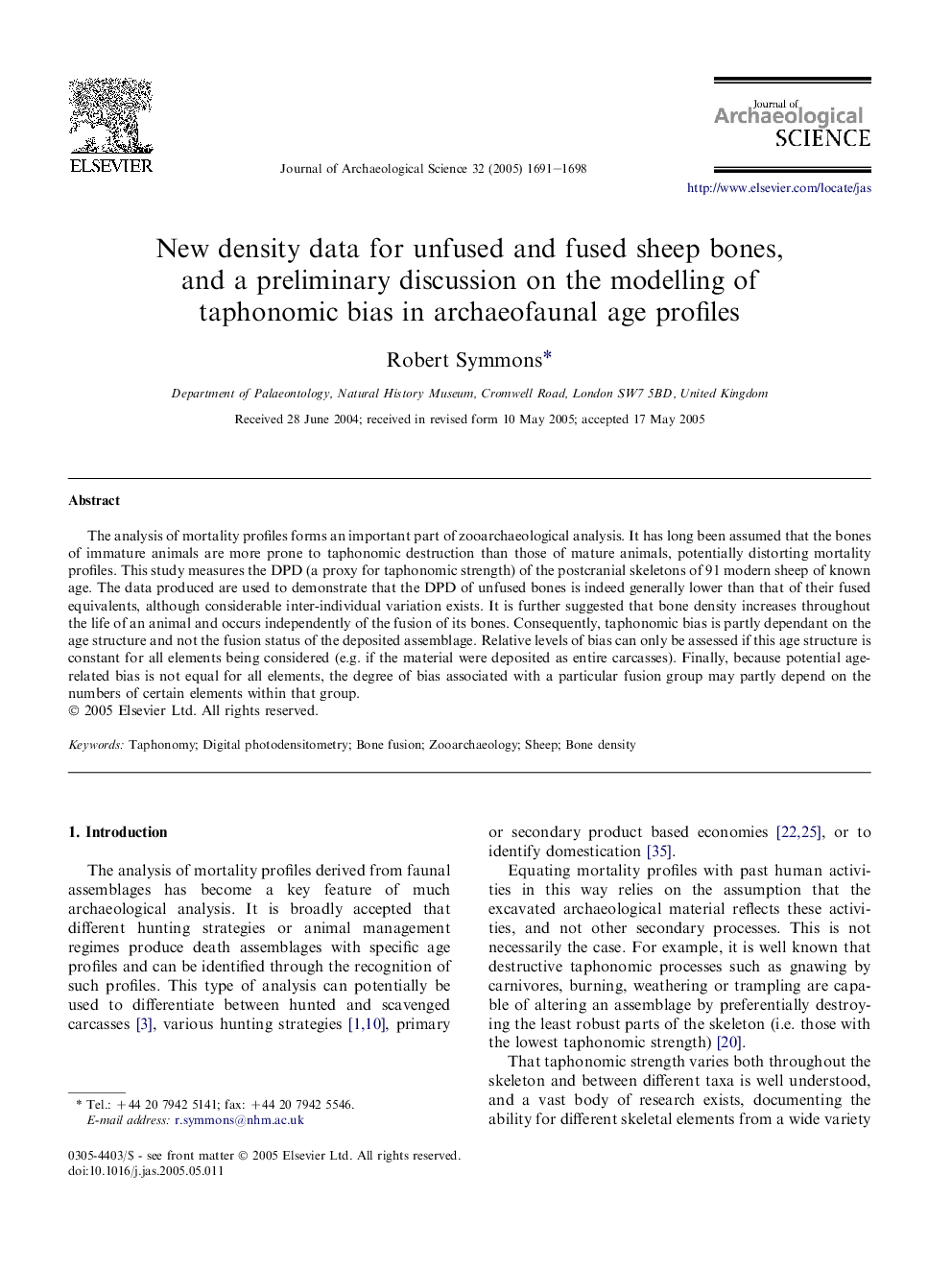| Article ID | Journal | Published Year | Pages | File Type |
|---|---|---|---|---|
| 10499378 | Journal of Archaeological Science | 2005 | 8 Pages |
Abstract
The analysis of mortality profiles forms an important part of zooarchaeological analysis. It has long been assumed that the bones of immature animals are more prone to taphonomic destruction than those of mature animals, potentially distorting mortality profiles. This study measures the DPD (a proxy for taphonomic strength) of the postcranial skeletons of 91 modern sheep of known age. The data produced are used to demonstrate that the DPD of unfused bones is indeed generally lower than that of their fused equivalents, although considerable inter-individual variation exists. It is further suggested that bone density increases throughout the life of an animal and occurs independently of the fusion of its bones. Consequently, taphonomic bias is partly dependant on the age structure and not the fusion status of the deposited assemblage. Relative levels of bias can only be assessed if this age structure is constant for all elements being considered (e.g. if the material were deposited as entire carcasses). Finally, because potential age-related bias is not equal for all elements, the degree of bias associated with a particular fusion group may partly depend on the numbers of certain elements within that group.
Related Topics
Physical Sciences and Engineering
Materials Science
Materials Science (General)
Authors
Robert Symmons,
